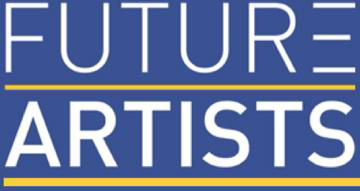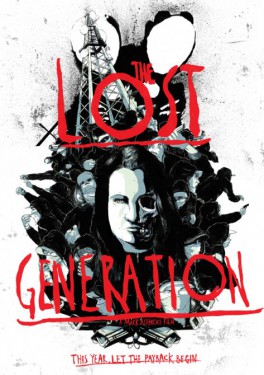 Back to selection
Back to selection
The Microbudget Conversation
We're Only Talking a Few Thousand Dollars by John Yost
The Microbudget Conversation: Do Your Homework
It’s been a few weeks longer than usual, and the list of reasons is a mile long. The first, and important few are: I’m moving, there are big things being planned for this column’s future, and I was at Independent Film Week. If you ever get a chance to go to IFW… Go. Especially if you are planning a film. I won’t get too far into it, (as many wonderful folks already have) but it was thrilling, inspiring, and sobering. Our industry is changing almost faster than we can keep up. There are a ton of creative folks out there learning from other industries’ mistakes and steering the boat clear; However, there are still some people who won’t give up the way things used to be. Micro-Budget is rapidly becoming an option for many filmmakers who just can’t get their film done through normal channels, and while it is not immune to any of these major changes, it is still one hell of place to maintain freedom of content and learn as much as you can. If this column has shown me anything it’s that there is a huge community of frustrated, talented, and dedicated folks out there who are willing to do anything to make their film — and that is exciting. The one quote I took away from the week was (it was easy…everyone ended their panel with it) “Do Your Homework!” As Micro-Budget folks we can only get better at this. Use that drive, passion, and freedom, but don’t rush it. If you’re frustrated, put it into the pre-production and make your no-budget film that much better…your brain costs nothing…so do your homework.

That goes well with this week’s contributor. Part call-to-revolution, part homework, Mark Ashmore gives you his take on the present state of film, and what you can study to do better on the test. I first came across Mark after one of our future contributors, John Paul Rice, introduced me to his article on Shooting People. I loved the message and I asked Mark to boil it down a bit for our micro community. It is the perfect example of the DIY spirit, and a small tip of the creative solutions iceberg.
“Without deviation from the norm, progress is not possible.”-Frank Zappa
It’s with these words in mind that, without even knowing it, thousands of storytellers and artists are evolving a new medium, a new artistic revolution, and a new industry. An industry which has yet to reach its watershed moment, but the wheel of evolution is turning so fast that the zenith is anytime soon, and we are all right in the middle of it.
Cinema du revolution – Why Hollywood is about to fail.
When I finished secondary school, I would come home, and switch the TV on…. It was here that my adolescent brain would be advertised to, entertained, and informed. There where 4 channels in the UK at the time, and music came on a CD you had to buy. It’s now 2011, and I recently taught a group of students at Channel 4. I told them my childhood story, and they told me the following:
on the way home we tweet and facebook each other about the day, the evening, or what’s on via a smart phone, while listening to music and sharing youtube videos, when we get in, we are back online, checking out whatever we are into on various online channels, most of which are independent, we try and steer clear of those heavy in advertisements, they do our heads in, we bit torrent most of the stuff, as there is too much choice, but we do buy what we really like, and meet up with others at gigs and stuff that we met online, if we do watch TV, we do so with a smart phone or laptop.
So why is Hollywood about to fail? Simple, it’s no longer relevant.
And when I say fail, I don’t mean in the commercial sense at the box office, I mean in the terms of artistic evolution and expression. It does not see the art of cinema. Yes, there are a few who can operate within its system and make masterful work, but the vast majority of output is not fit for artistic consumption. Yes, Cinema is an art form, period, a very profitable one, but it’s time for the artists to reclaim the screens, as important work needs to be seen and stories need to be told. When I say no longer relevant I mean a content creator audience has emerged that is less interested in the self-experience of the one-trick multiplex. This new audience has evolved and wants to be part of the beat, the excitement of creation, and the bearer of ideas. This audience wants to be a part of the artistic struggle, not just observe it. This new audience wants authenticity and connection to their art and artists. If stories are the reflection of human nature, then what is happening now is a struggle for human rights. Freedom of expression cannot, and will not, be dominated by corporations, greed, and consumption. A creative revolution is underway; Storytellers with vision, access to the right gear at street level, and an audience evolved enough to collaborate.
– Enter, the first three steps of the cinema du revolution. –
1 – Peer-to-Peer Distribution (AKA Campfire Theory)
Back in the day, humans as hunter/gatherers would roam the land in search of food and maintain connection with other humans in the form of community. After a day hunting, communities would gather around the campfire to eat and share stories. These stories would go on to become knowledge, folklore, and mythology. If deemed important enough some of it would be recorded in sacred sites for the next generation, and those stories would be passed down, “bit-torrented”, if you will, as verbal stories across generations.
The modern version of the campfire stories is information passed along on social networks to a group that is willing to listen. This community allows not just the written, the spoken, the visual, and the musical to be shared, but also the persona and network. This creates more information on a story and a storyteller than could have been gathered from the original campfire story. We now see the whole picture – the story and the storyteller in a real context to a piece of creative. We see the authentic. The more authentic the experience, the closer the connection between audience and creator, a bond that cannot be purchased off the shelf. This experience, will in turn catapult the audience member to want to help, work with, or share an artist’s work. Combine this with cinema, the greatest art form of them all, and what you have is the chance to create a peer-to-peer distribution system based on personality and contextualization, not just on how much money they have to spend on print and advertising.
2 – Tools
To achieve a collective conscious online, the correct tool set is needed. You’ll also need a new mindset to work with these tools in new ways, and understand what effect it will have to your campfire.
1 – Blogs – Scrapbooks of thoughts to pass around.
2 – Youtube – Your view of the world for others to share and see.
3 – Facebook – You, your friends, and your persona…a campfire.
4 – Twitter – Brief snippets of real conversations…global campfire.
5 – Website – Your home on the web.
6 – Podcast – Audio view of the world, your voice, your music, your thoughts.
7 – Events/Meetups – A place for you to meet with others for a real campfire.
8 – Photos – You as seen by others, your view, your view re-created.
9 – Transmedia – All the above combined into your story.
10 – Your Feature Film – A tent stake for the rest of this content to orbit.
In response to the vacuum left by Hollywood to chase the consumer-driven audience, the new independent filmmaker must come to grips with all the tools available to them. This goes beyond the film school or media studies practice of looking at the film itself. Instead, 50% of the production/creation time needs to be spent working with a new creative workforce – that of the creator audience.
 In my recent work, Project Praxis, I used the internet as a depository for archive material, a digital archive of sound, words, pictures, and video, in some cases created by fans of Factory Records. I worked with unknown creators across the world to pull together a documentary and musical happening, all done through the transparency of a shared passion for Manchester culture, and understanding the digital tools which were freely available. The project was inexpensive and took about 6 weeks of part-time work to pull together with a crew of 50 – who also became the first audience and ambassadors for the project. Project Praxis was my first experiment in the cinema du revolution, and it shows that using the perspectives and observations in point 1 and 2 allows a community to flash mob into action on any given project if there is a need for something to happen – and if the audience can become the creator.
In my recent work, Project Praxis, I used the internet as a depository for archive material, a digital archive of sound, words, pictures, and video, in some cases created by fans of Factory Records. I worked with unknown creators across the world to pull together a documentary and musical happening, all done through the transparency of a shared passion for Manchester culture, and understanding the digital tools which were freely available. The project was inexpensive and took about 6 weeks of part-time work to pull together with a crew of 50 – who also became the first audience and ambassadors for the project. Project Praxis was my first experiment in the cinema du revolution, and it shows that using the perspectives and observations in point 1 and 2 allows a community to flash mob into action on any given project if there is a need for something to happen – and if the audience can become the creator.
3 – Show me the money. Pay the artist.
It’s all well and good working with your audience in the art of creating and communicating effectively with them for support, but how can artists sustain themselves in the art of creation? Instead of thinking about “How am I going to get paid?” how about thinking, “How can we ALL get paid for this?”
Creative Commons is in its early days, but it’s a great legal framework to begin sharing intellectual property on projects. Gone are the days of exclusivity – you are working on the web, a giant photocopy machine, and once an idea is out there, it is reproduced and passed on. However, the source of the idea is always the place that needs crediting. Allowing both content creator and director/producer (if they are separate) to share in the exploitation of the film clip, audio file, picture, script etc., is key. Once you have a legal right to exploit creativity in your project, how do you allow your audience to partake in the monetisation of the project?
-Affiliate Marketing-
If you use Amazon as your storefront, for $29 a month you can sell your film in whatever format you choose through the world’s biggest marketplace. Not only is this a safe destination for customers to buy, but you will also be ranked and can take part in various promotional activities that Amazon offer. You can also add other relevant products to your store – for example, you can earn a commission by selling other indie films by your friends on Amazon, or sell Hollywood blockbusters next to your title if they have similar themes. Amazon also allows for people to become affiliates. This simply means that if they sign up to the affiliate program they can promote your work via a banner ad, video, or link and earn a percentage for every item sold. This does not effect your income, it enhances it. If a member of your content creator audience has a large network, or a well-read blog, they can earn £££ by featuring your project with a link to buy, which they were more than likely going to do anyway.
-VOD-
iTunes is one way of getting the work out there, but having to split profits with iTunes, and having to pay a 3rd party company to get you onto iTunes, won’t leave much profit from the 99p download. If you want to make money then steer clear of iTunes. The promoters in the room would argue that it’s the world’s biggest marketplace for downloads. Yes, it might be, but nobody knows you in this digital space, so why sell there?
Instead, a host of innovative new ways of achieving video-on-demand for indies are popping up. For our latest project, Invisible Circus: No Dress Rehearsal, we worked with Dynamo player out of New York to host our VOD. The player looks like a YouTube player and can be embedded anywhere, by anyone, and shared via the usual social media tools. If people want to watch your film, all they do is pay via PayPal or Amazon and the film is streamed on demand. They can then watch it as many times as they like during a set period that you decide. The splits are reasonable, too, and payments go straight into your account.
What this means is, instead of sending your audience and fans to iTunes, which is the equivalent of a bargain music store piled to the rafters with content, you send them to a player that allows your peer group to host a screening and bring a new audience into their digital space, thus broadening your campfire.
-Rep the Screenings-
Live cinema experiences are still where it’s at, but entry into the hallowed cinema arena is the exclusive privilege of the literal chosen few. Most indie auteurs will only experience this at a local level, or at film festivals.
However, projectors can be picked up for £300, and a good home cinema system can fill small spaces. Cafes, bars, and church halls are always looking for people to fill their venues and coffers, so roll up your sleeves and tour your film. You will have plenty of places to visit as your audience in your peer group will be global. Roll into town, share your story, and then roll out to the next one, allowing the community to point you to the next place.
You can also now allow your audience to REP the event, giving them a share of every ticket sold. We used FATSOMA.COM with our project Invisible Circus: No Dress Rehearsal, which makes it easy for your fans to just click ‘Rep the event’ anywhere in the world, create an account using Facebook, and get a unique URL. That address can be shared via text msg, e-mail, social media etc… Every time someone clicks on the URL and purchases a ticket, a commission is paid into the REP’s account, and the remainder of the ticket is paid into your account. The service costs £1 per ticket and you can withdraw funds after you have made £10.
This system is ground-breaking if used in the correct way. If you observe the 1-9-90 rule, out of 100 people, 1 person will be a hardcore fan, 9 will participate and 90 will observe. The 1 hardcore fan and the 9 fans, should take up being a REP for your project. That means that you have an instant marketing team, which if you supply them with the correct promo material, will promote as a means of income – and not just out of passion for what they have worked on. Imagine how this can work around your global story-telling campfire…
It’s here that I have to STOP….
I have not even touched on screening work on Facebook for money, YouTube’s partnership schemes or touring with other filmmakers, but I hope you are seeing a new picture emerging…
FUCK THE SYSTEM.
Operating outside of the stale system of commercial creativity is a new vanguard of cultural revolutionaries. I am one of them, but there are many of us all around the world, re-inventing the industry to work for us instead of us fitting into their industry. What lies ahead are incredible times, some of which will happen without the mainstream even hearing about it. For those street level cats with an ear to the ground, what is about to surround them is creativity on a wave of revolution. That is something exciting to be part of, and the great thing is, the creators are still making this up.
The cinema revolution has already begun. Without deviation from the norm, progress is not possible. Join me on the journey. – Mark Ashmore –
Channel 4 – Free event http://futureartists.co.uk/2011/08/03/future-artists-channel-4-hq-screening-invisible-circus-no-dress-rehearsal/
We’d never turn down the chance to hear from you, especially microbudget fans and filmmakers. To become part of the conversation please send us your thoughts, responses, and questions.
